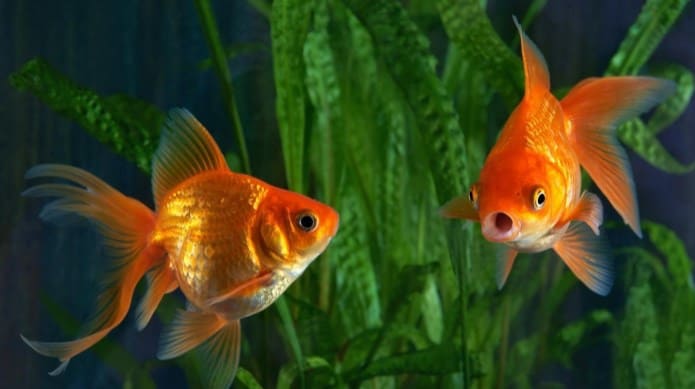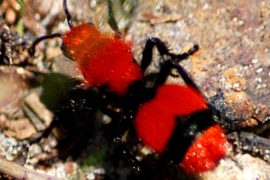Healthy plant growth is the basis for the ecological balance in the aquarium.
Conversely, the condition of the aquarium plants is an important indicator of whether the aquarium offers good living conditions for plants and animals. Therefore, you should regularly check the health and growth of your plants. However, beginners in particular are often not sure what to look out for. Go through the aquarium checklist about once a week and you’ve done the most important things for your aquarium plants.
Do the aquarium plants look healthy?
Take a look at your aquarium plants at regular intervals. Do they grow evenly and vigorously? Are they forming healthy new leaves and shoots? Even if you don’t have a green thumb yet, over time you’ll gain an insight into whether your plants are doing well.
Check the aquarium plants for abnormalities such as:
- Discoloration of leaves (eg, yellowing or whitening, spots, or streaks)
- Deformations of the blades (e.g. waves or bends)
- Holes or black spots in the leaves
- Growth in length (large distance between the leaves on the stems)
- short stature (new leaves are very small in size)
- Low propagation of the plant (e.g. with floating plants)
- Increased dying of the leaves or shoot tips
While length growth is a sign of too little light, disturbed growth and changes in the plants usually indicate a lack of a certain nutrient.
If you notice signs of this type in your plants, you should find out what the plant needs and use water tests to check for nutrient deficiencies.
Are aquatic plants infested with algae?
Increased growth of algae in the aquarium is usually a sign that your aquarium plants are not doing well. If the water values are not in balance, the lighting is unsuitable or if the aquatic plants do not have sufficient nutrients, this can inhibit their growth. Algae will settle for far less and thrive even under difficult conditions. Help the aquarium plants regain the upper hand! You can find tips on this in our article Algae in the aquarium
If you find that algae are growing on your aquatic plants, remove them manually and get to the bottom of the cause of algae growth as quickly as possible.
Is there snail damage on the aquarium plants?
Smaller snail species such as ramshorn or bladder snails are desirable stocks in most aquariums. They play an important role in consuming leftovers and do not normally multiply excessively. Aquarium plants are of no interest as a food source for most snails, as they feed on leftover food, growth, or algae.
However, if too much is fed, the snail population in the aquarium can increase rapidly. As a rule, it is only when there is a great shortage of food that the snails start eating healthy parts of the aquatic plants. However, it often looks as if snails are eating aquarium plants, as they devour dead and diseased plant parts. Alleged damage caused by snails can also be a sign that your aquarium plants are not healthy.
If you find a lot of snails in the tank, collect some of them regularly. Check the aquatic plants for signs of disease if you see a lot of feeding damage.
Are the water values of the aquarium in the optimal range?
Not every aquarium owner constantly keeps an eye on the water values in his aquarium and depending on which animals and plants are being cared for, this is not always necessary. However, it is also helpful, especially for beginners, to have an overview of the water parameters.
The most important water parameters include:
- pH — This should be in the range of 6.5 to 7.5 for the vast majority of aquatic plants.
The total hardness GH — It is in the aquarium-suitable range in most tap water. If the total hardness is well above 20 °dGH, we recommend water treatment with an osmosis system. For smaller, so-called nano aquariums, you can also use distilled water from the hardware store to mix with tap water. - The carbonate hardness KH — It is also referred to as temporary hardness. Depending on the carbon dioxide content and pH value, the carbonate hardness changes over the course of the day. Their influence on plant growth is only indirectly important.
The nitrate NO3 — nitrate is not as problematic for plants as is often assumed. It is formed in the aquarium from the metabolic products ammonia (NH4) and ammonium (NH3), which are burned via nitrite (NO2) to form nitrate (NO3). Plants prefer to “eat” the ammonium. Unfortunately, this is rather short-lived. Therefore, the plants are forced to take up nitrate as a source of nitrogen. In concentrations above 50 mg/l, nitrate is toxic to fish and invertebrates. However, plants could easily tolerate even higher concentrations. With regular water changes, you should keep the nitrate content below 20 mg/l for the sake of the fish. - Nitrite NO2 — Nitrite is toxic to fish and plants and should therefore only be present in the aquarium in homeopathic doses. In a healthy aquarium environment, however, it is very quickly oxidized to nitrate by the ubiquitous nitrobacterium. A higher concentration of nitrite can only occur during the start-up phase of the aquarium. Therefore, fish should only be used after the so-called nitpick
- Carbon dioxide CO2 — Carbon dioxide dissolves in water and supplies the plants with the necessary carbon for their biomass. A part is converted into carbonic acid H2CO3 in the water. This in turn plays a major role in the relationship between carbonate hardness and pH. However, it has only an indirect meaning for plant growth. Many plants also grow without the addition of CO2. However, you can clearly see from aquariums with CO2 fertilization that the plants produce larger and somehow healthier-looking leaves and shoots.
Determine the values with simple droplet tests that you can get from specialist retailers. You can also have your aquarium water tested in many specialist aquarium shops. The test devices that are used for this purpose are usually only worth buying for very ambitious hobby or professional aquarists.
For owners of demanding aquarium plants, a long-term CO2 test may be worthwhile, on which the carbon dioxide value can be easily read. So keep an eye on it all the time. You can also use the pH and KH values to calculate the CO2 value. Useful tools and tables can be found online.
If the test result deviates from the desired values, take appropriate measures. By regularly checking the water values, you ensure that your aquarium plants always find optimal growth conditions.
Do plants need to be thinned or cut back?
Regular pruning and thinning out of the aquarium plants is part of plant care. As with all changes that are made in the aquarium, the following also applies here: smaller interventions are better than large changes. The latter damages plant growth and can have a negative effect on the ecological balance in the aquarium.
Conversely, this does not mean that you should tug at your aquarium plants as often as possible. Every reaches into the aquarium means stress for the residents and you are also doing the plants a disservice. It is best to do all the necessary work as part of the weekly plant care when changing the water.
These include, for example:
- Floating plants should be thinned out regularly so that the tank is not darkened too much. If the floating plants multiply, this is a sign of a good supply of nutrients in the aquarium.
- Prune stem plants if they get too long and replant the top cutting in front of the cut plant. This will branch out so that you gradually get a dense thicket of plants.
- Many cushion-forming plants are grateful for regular pruning. In this way, all parts of the plant receive sufficient light. Cut back the plants where they grow too dense, preferably with aquarium scissors.
- You can cut off the offshoots of rhizome plants, such as water calyxes, which spread too far in the aquarium or grow into other plants. Simply put the offshoots back in a different place.
Lend a hand where the plants overgrow too much so that the view into the aquarium is restricted. The same applies where the vegetation is so strong that parts of the plant no longer receive sufficient light.
Are there dead plant parts in the aquarium?
You don’t have to collect isolated yellow or decomposing leaves immediately – even if it may bother you visually at first glance. A withering leaf here and there is definitely part of a natural aquarium. The decomposing plant material and the microorganisms that settle on it can also serve as a source of food for the animals in the aquarium.
For this reason, many aquarium owners bring dried foliage into their tanks. It is an excellent source of food for shrimp and snails, for example, and has a positive effect on water parameters by lowering the pH value. It can remain in the aquarium until it has completely decomposed.
Remove dead plant parts from the aquarium when changing the water regularly. If you want to remove old leaves from plants, carefully cut them off with a very sharp knife or razor blade.
Are the aquarium plants supplied with fertilizer?
Fertilizing with liquid fertilizer plays an important role in the care of aquatic plants in the aquarium because many aquarium plants absorb nutrients with their leaves. Most aquarium owners fertilize as part of the water change. However, do not forget that the water that is not exchanged also loses nutrients. If there is no water change, it should also be fertilized regularly.
Does the aquarium fertilizer according to the manufacturer’s instructions and be careful not to use too much fertilizer. Also remember to regularly supply plants that get their nutrition through the roots with fertilizer balls or tabs, unless this is ensured by a nutrient medium. If you are caring for demanding aquarium plants, you will also not be able to avoid CO2 fertilization.
It can be helpful, especially for beginners, to check the nutrient supply in the aquarium using water tests and, for example, to measure the iron value (Fe) in addition to the basic water values. In this way, you do not only notice a nutrient deficiency when it becomes visible on the plants – and you can always offer your aquarium plants optimal conditions.
Keep an eye on your aquarium plants and the nutrient content of the water. Fertilize regularly as much as necessary and pay attention to the special requirements of your plants.
Do you have comments or questions about our aquarium checklist?
We appreciate your comments!





